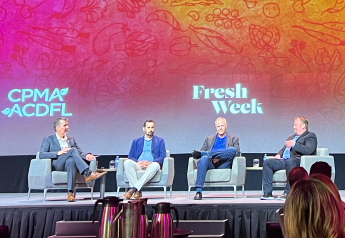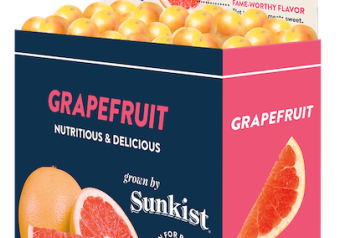The rise of the virtual restaurant

Pizza delivery has been common for decades, but today pizza is peanuts compared to the countless options available via third-party delivery apps like UberEATS, DoorDash and Postmates.
And while it’s easy to point to the benefits for consumers (variety and convenience, to name a couple) the trend toward delivery versus taking out or dining in is giving rise to a new foodservice concept: virtual restaurants.
Virtual restaurants have no storefront and can include pod-like or shipping-container-size kitchens that are mobile and can be housed under bridges, in the corner of parking garages and in unused retail space, reducing overhead and labor costs.
“Labor costs across the country are going up, and that’s clearly putting pressure on all restaurants,” Jason Rusk, vice president of innovation at Red Robin Gourmet Burgers, said in an article in The New York Post. “Ideally, we’d like to go into low-rent warehouse spaces with our delivery concept.”
Red Robin and Bloomin’ Brands, owner of Outback Steakhouse and Carrabba’s Italian Grill, are two national chains exploring the virtual restaurant concept. But perhaps the biggest potential disruptors in the delivery-only space are the mobile applications themselves.
Earlier this year, Grubhub invested $1 million in Green Summit Group, a startup with nine virtual restaurants operating from a single kitchen. DoorDash is renting extra space from the Santa Clara Fairgrounds in San Jose, Calif., and making it available to foodservice operators who want to create delivery-only options. In Los Angeles, Postmates leased a commissary kitchen space so its restaurants can reach new customers. And UberEATS is exploring the concept with Poke Café in Chicago — a virtual restaurant serving Hawaiian poke bowls.
“We can work with existing restaurant partners to create delivery-only menus. (They would) appear as entirely new restaurants on the UberEats app,” Ambika Krishnamachar, UberEats product manager, said in an article on Mashable.
Operators of traditional restaurants are considering the implications. Some, like Red Robin and Outback, are attempting to be ahead of their competitors by setting up their own virtual kitchens. Others are partnering with third-party delivery apps to make their restaurant menus more widely available to out-of-restaurant diners. Many are keeping a close eye on the trend.
“Proclamations on delivery’s potential impact on restaurants tend to be overstated,” Jonathan Maze, executive editor with Restaurant Business magazine, said on Twitter on March 19. “Yes, delivery is booming. Many people love it. But it’s still a tiny percentage of industry sales. There are still questions about third-party services’ future, and costs remain a concern.”
As growers-shippers think about their customer base, it’s important to not get complacent. Keep an eye on your customers because they are changing, and so is the customer’s consumer.
While I don’t believe virtual restaurants will completely usurp traditional dining due to the myriad of other benefits provided by the restaurant experience, virtual restaurants will affect some operators. So next time you pick up your phone to order a meal desk-side or at home, that “restaurant” you are ordering from might not be what you envision as a traditional one.
Tim York is CEO of Salinas, Calif.-based Markon Cooperative. E-mail him at timy@markon.com.







